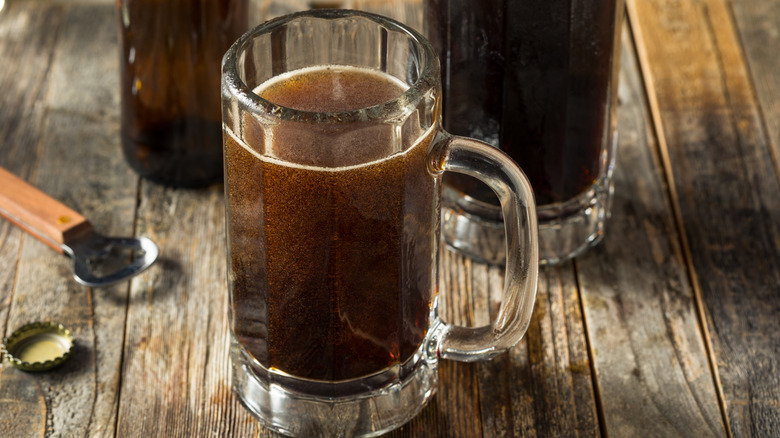Root Beer Vs Birch Beer: What's The Difference?
Root beer and birch beer might look alike, but they're totally different when it comes to flavor, ingredients, and history. Both have been around forever and have that old-school soda vibe, but the big difference is in their ingredients. Root beer is a combination of roots, herbs, and spices that gives us that flavor we know and love, while birch beer gets its unique flavor straight from birch bark. That one swap makes them very different.
Root beer is on the soda A-list; it's sweet, creamy, and has hints of vanilla and caramel. It's the go-to for floats and classic soda shop vibes. Birch beer has a sharper, spicier kick, with a more natural, woodsy feel. Some people say it tastes fresher, almost like it was made straight from the forest. Both are great, but they bring completely different flavors to the table.
To truly understand what makes these sodas unique, let's break them down individually. First, we'll take a closer look at root beer and what makes it so popular. Then, we'll explore how birch beer differs and why some people prefer its pronounced, refreshing flavor.
What is root beer, exactly?
Root beer has been on the scene for quite some time ... centuries, to be exact. Its origins date back to early American settlers who brewed medicinal drinks using a blend of herbs, roots, and spices, with sassafras providing its distinct staste. However, modern root beer is missing this signature ingredient, because natural sassafras contains safrole, which was found to be a potential health risk. Root beer companies today use artificial sassafras flavoring or other root-based alternatives.
Root beer's flavor profile is smooth and sweet, with hints of vanilla, caramel, and wintergreen. Many commercial brands add extra ingredients like molasses or nutmeg to enhance the taste. Root beer is also typically caffeine-free, since none of the individual ingredients contain caffeine. As a result, it's a popular choice for people who want a non-caffeinated soft drink. It also has a distinct creamy texture, which is enhanced when served with a scoop of vanilla ice cream as a root beer float (just remember to frost the glass first for the best root beer floats).
Different brands have developed their own versions of root beer, ranging from extremely sweet to more herbal and complex. Some companies use yeast fermentation to create natural carbonation, while others rely on artificial carbonation for a crisp, fizzy mouthfeel. Straight from a bottle or mixed into desserts, root beer remains one of the most beloved soft drinks in the United States.
How birch beer stands out
Birch beer might get mistaken for root beer, but it does its own thing. Instead of using roots and spices, it's made straight from birch tree bark, usually the black birch or sweet birch variety. The bark is boiled down to pull out all the oils and flavors, which gives birch beer its crisp, slightly spicy taste. Some say it's got a more intense, earthy vibe than root beer, with hints of mint or wintergreen.
One big difference between the two is that birch beer isn't as creamy as root beer. It's sharper, fresher, and not as sugary, which makes it perfect for people who find root beer a little too sweet. It also comes in different colors — red, brown, or clear, depending on the type of birch used. Red birch beer has a strong wintergreen kick, but the clear kind is lighter and more refreshing.
Root beer is everywhere, but birch beer? Not so much. It's mostly an East Coast thing, especially in Pennsylvania, New York, and New England. A lot of people have never even heard of it, but once they try it, they're all in. It has that bold, natural flavor that makes root beer seem basic in comparison. Whether you drink it straight or mix it into a cocktail, birch beer definitely deserves more love.


